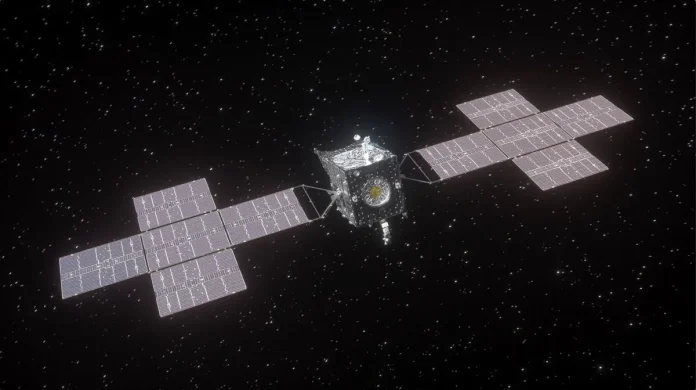Psyche is a robotic space mission developed under NASA's Discovery Program, with the primary goal of studying a metal-rich asteroid. The mission focuses on the asteroid (16) Psyche, named after the Greek goddess of the soul, located in the main asteroid belt between Mars and Jupiter. Psyche is believed to be the remnant core of a planetesimal, which is expected to offer unique insights into the formation of the Solar System.

Psyche Spacecraft (NASA)
Mission Summary
The Psyche spacecraft was successfully launched on October 13, 2023, from the Kennedy Space Center in Florida aboard a SpaceX Falcon Heavy rocket. The mission plans to reach its target asteroid in 2029 after a journey of approximately 6 years. During its mission, the spacecraft will conduct a detailed study of the asteroid's surface composition, magnetic field, morphology, and gravity field.
Scientific Aims and Objectives
The Psyche mission aims to conduct the first-ever direct observation of a metal-rich asteroid (specifically containing iron and nickel). This will provide information about the nature of planetary cores and the processes of planet formation. The mission's primary scientific objectives are as follows:
- To analyze the iron-nickel-rich structure of the asteroid Psyche.
- To uncover clues about the asteroid's geological history.
- To measure the presence and characteristics of a magnetic field.
- To model the asteroid's internal structure by determining its mass distribution and density.
Technical Specifications
- Spacecraft Type: Deep space probe
- Launch Date: October 13, 2023
- Estimated Arrival Date: August 2029
- Total Mass: Approximately 2,609 kg
- Power Source: Large-surface solar panels (~21 kW power generation)
- Propulsion System: Solar electric Hall-effect thruster
- Launch Vehicle: SpaceX Falcon Heavy
- Mission Duration: ~6 years of travel + ~26 months of observation

Psyche Spacecraft (NASA)
Scientific Instruments
The Psyche spacecraft is equipped with various scientific instruments to collect detailed data about the target asteroid:
- Multispectral Imager: A high-resolution color imaging system. It will provide detailed images of the asteroid's surface features.
- Gamma Ray and Neutron Spectrometer (GRNS): Measures the surface composition and analyzes its metal content.
- Magnetometer: Used to measure Psyche's possible remnant magnetic field. This will help determine whether the asteroid once had a molten core.
- X-band Gravity Science Investigation: Provides clues about the internal structure by measuring the spacecraft's motion in the asteroid's gravity field.
Target Asteroid: (16) Psyche
- Diameter: Approximately 226 kilometers
- Location: The main asteroid belt between Mars and Jupiter
- Characteristics: Extremely rich in metal, estimated to be composed of 60% to 95% nickel-iron alloy.
- Significance: Psyche is thought to be the potential core of a once-larger planetesimal. This feature offers an opportunity to gain insights into the internal structures of terrestrial planets, including Earth.
Mission Process and Trajectory Plan
After launch, Psyche will use Earth's gravitational assist to set its course toward the target asteroid. It will perform an Earth flyby maneuver in 2026 and then head into deep space to reach the main asteroid belt. The spacecraft will arrive at the asteroid Psyche in 2029 and begin an observation period lasting approximately 26 months. During this time, the spacecraft will orbit the asteroid in progressively lower altitudes, collecting data from four different orbits.
Significance and Scientific Contribution
The Psyche mission is the first to directly investigate an asteroid that resembles the iron-nickel core of a planet. Through this mission, it will be possible to gain direct knowledge about the central structures of Earth and other terrestrial planets. Additionally, it will yield critical data on the composition, formation, and evolution of metallic asteroids. The mission is expected to provide groundbreaking information for many disciplines, including planetary science, cosmochemistry, and geophysics.

